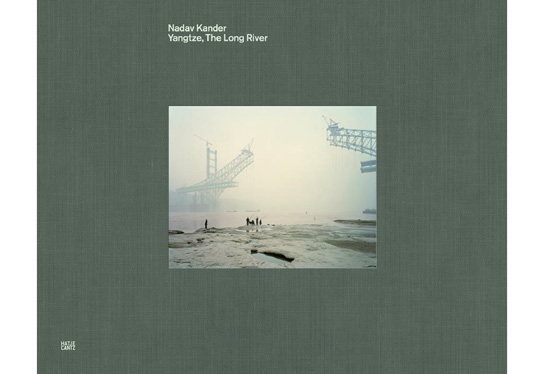Review: Yangtze, The Long River by Nadav Kander

“More people live along the Yangtze’s banks than in the whole of the United States,” writes Nadav Kander in the notes of his new book Yangtze, The Long River, “that is one in every eighteen people on the planet. […] This extraordinary and vast river is embedded in the consciousness of the Chinese. It is much more than a waterway. It contains their history and their folklore. It runs in the blood of the people.” And later: “China is a nation that appears to be severing its roots by destroying its past. Demolition and construction were everywhere on such a scale that I was unsure if what I was seeing was being built or destroyed, destroyed or built.” We are familiar with such narratives, and we have seen aspects of the imagery in the book before. What we have not seen, however, is a single artist trying to tie things together. (more)
In 2006 and 2007, the artist traveled along the Yangtze to take photographs, using the river as a metaphor what might have - and is still - going on in China. It is a compelling idea, since many nations are tied to their largest rivers in complex and often deeply irrational and/or mystical ways. When we think of Germany and the Rhine, it’s not just castles and wine, it’s also the saga of the Nibelungen, the gold dumped into the river, and, of course, the operatic kitschfest Richard Wagner turned this story into. Egypt has its Nile, the US have the Mississippi (no kitschy operas for those, though - unless I’m missing something, in which case I don’t want to know).
Constantly changing they might be, but large rivers tend to serve as large screens onto which one can project one’s ideas. Of course, that’s not a particularly clever metaphor (don’t take it too literally!), but it describes something we come across frequently.
In the context of Yangtze, The Long River you now also have to add the fact that as viewers, we project our own ideas onto this body of work, our own preconceptions and stereotypes and opinions; and it’s not hard to see how things get very interesting.
I think you can literally take the images for almost anything you want, and to a certain extent they will support your ideas. But whatever you might think about this particular river and what it might say about China, there are always enough photographs that not only challenge, but also negate your theses.
A lavish production, for the photography of which Kander received the 2009 PrixPictet, Yangtze, The Long River also contains notes by the artist about the individual images, maybe a little bit too tucked away at the end. But they’re there, and you want to read them. I wish artists would do this more often, write about individual images, their thoughts and ideas or maybe even just some seemingly irrelevant detail, about how, for example, passers-by would taunt the photographer’s translators about him taking photos of boring scenes. This is not necessarily where or how the images come alive - they need to and do stand on their own - but it makes the artist appear from behind the curtain, willingly.
Ultimately, Yangtze, The Long River is not so much a book about China at this particular point in time, it’s a book about us and what we are making out of this planet. It’s not a pretty sight.
A book that deserves wide exposure.
Yangtze, The Long River, photographs by Nadav Kander, essays by Kofi A. Annan and Jean-Paul Tchang, 160 pages, Hatje Cantz, 2010